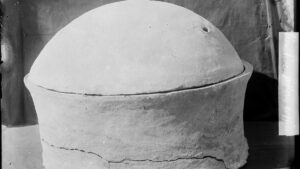Majuli, the largest river island in the world, has received two prestigious Geographical Indication (GI) tags from the Indian government for its traditional crafts – Majuli mask making and Majuli manuscript painting.
Highlights:
- Majuli masks and manuscript painting have received GI tags
- A GI tag identifies products with unique qualities from a specific geographical region
- Majuli masks are used in traditional bhaonas (theatrical performances) of the neo-Vaishnavite tradition
- Masks can depict gods, goddesses, demons, animals, and birds
- Manuscript painting is done on sanchi pat (bark of the agar tree) using homemade ink
Majuli Mask Making
- Masks have been made in Majuli since the 16th century
- Masks are traditionally made in sattras (monasteries) for bhaonas
- Mask making is now being promoted as an art form beyond traditional use
- Masks are made from bamboo, clay, dung, cloth, cotton, and wood
- Efforts are being made to modernize and increase the use of masks
Majuli Manuscript Painting
- This art form originated in the 16th century
- Paintings are done on sanchi pat (manuscripts made of agar tree bark)
- The earliest example is said to be a rendering of the Bhagwat Purana by Srimanta Sankardev
- This art was patronized by the Ahom kings
- It continues to be practised in sattras (monasteries) of Majuli
The GI tags will help in promoting and preserving these traditional crafts of Majuli, which are an integral part of the neo-Vaishnavite culture of Assam.




 Puducherry Becomes First State to Integr...
Puducherry Becomes First State to Integr...
 Ancient Egyptian Genome Sequenced for th...
Ancient Egyptian Genome Sequenced for th...
 Warren Buffett Donates $6 Billion to Fiv...
Warren Buffett Donates $6 Billion to Fiv...

